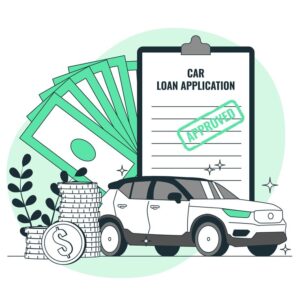
Auto banking in Canada includes various financial services related to purchasing, financing, and managing vehicles. If you’re planning to buy a new car, refinance an existing auto loan, or understand the details of auto financing, this guide will help you navigate the process with ease. Let’s explore how auto banking works in Canada.
Understanding Auto Banking
Auto banking refers to the financial products and services offered by banks and credit unions to facilitate the purchase and financing of vehicles. This includes auto loans, refinancing options, and leasing. The primary goal is to provide consumers with the necessary funds to buy a vehicle while managing the associated financial responsibilities.
Getting Pre-Approved for an Auto Loan
A critical first step in the auto banking process is getting pre-approved for an auto loan. This involves a preliminary assessment by the bank or credit union to determine your eligibility for a loan amount and interest rate.
Also Read: auto loan pre-approval
You may be interested in: how to get pre-approved for an auto loan in Canada
– Credit Check: During pre-approval, banks perform a soft credit check, which does not affect your credit score but helps the lender gauge your creditworthiness.
– Income and Employment Verification: You’ll need to provide proof of income and employment, allowing the lender to assess your ability to repay the loan.
Applying for an Auto Loan
After pre-approval, the next step is submitting a formal loan application. This involves providing detailed documentation to the lender, such as:
Also Read: auto loan application
You may be interested in: applying for an auto loan in Canada
– Proof of Identity: Valid identification documents like a driver’s license or passport.
– Proof of Income: Recent pay stubs, tax returns, or a letter of employment.
– Credit History: A detailed credit report to review your financial health and repayment history.
Choosing Your Vehicle
With pre-approval, you can now select your vehicle. The type of car you choose will impact the final loan terms. New cars usually have lower interest rates compared to used cars because of their higher value and lower risk.
Also Read: vehicle selection
You may be interested in: choosing the right car for auto financing in Canada
Finalizing the Loan
After selecting your vehicle, you’ll need to finalize the loan agreement. This document outlines the terms and conditions of your auto loan, including the interest rate, repayment schedule, and any fees.
Also Read: loan agreement
You may be interested in: finalizing an auto loan in Canada
Types of Auto Loans
In Canada, there are mainly two types of auto loans:
1. Secured Auto Loans: These loans use the vehicle as collateral. If you default on the loan, the lender can repossess the car. Secured loans generally offer lower interest rates.
2. Unsecured Auto Loans: These loans are not backed by collateral and rely solely on your creditworthiness, usually resulting in higher interest rates.
Also Read: secured auto loans
You may be interested in: differences between secured and unsecured auto loans in Canada
Refinancing Your Auto Loan
Refinancing involves replacing your current auto loan with a new one, ideally with better terms. This can be beneficial if interest rates have dropped or your credit score has improved.
Also Read: auto loan refinancing
You may be interested in: how to refinance an auto loan in Canada
Leasing Options
Leasing offers an alternative to buying a car. With a lease, you essentially rent the vehicle for a specified period, typically two to four years. Monthly payments are usually lower than loan payments, but you won’t own the car at the end of the lease term.
Also Read: car leasing
You may be interested in: leasing vs buying a car in Canada
Tips for Successful Auto Banking
1. Maintain a Good Credit Score: A higher credit score can lead to better loan terms.
2. Shop Around: Compare rates and terms from different lenders.
3. Understand Total Costs: Look beyond monthly payments to the total cost of the loan, including interest and fees.
4. Read the Fine Print: Ensure you understand all terms and conditions before signing.
Also Read: credit score
You may be interested in: tips for improving credit score for auto loans in Canada
Conclusion
Understanding how auto banking works in Canada can help you make informed decisions when financing a vehicle. By knowing the steps involved, from pre-approval to finalizing your loan, and considering options like refinancing and leasing, you can navigate the process with confidence and ease.
For more detailed guides and tips on auto banking, stay tuned to our blog. Happy driving and smart banking!

4 thoughts on “How Does Auto Banking Work in Canada?”